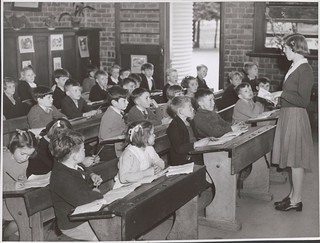
After watching the drama video about structuring a drama lesson. It is clear how the lesson is structured:
- A Drama contract is created
- Warm up
- Focus
- Development
- Visualisation
- Soundscaping
- Bodyscaping
- Thought tracking
- Evaluation
The drama contract is created with the class to set clear rules that they must follow in the lesson. This is a great way to make sure that all of the children understand what is expected of them. In the video the contract is placed on the wall so that they can has a visual of what they must do. The use the 3 C’s – Communication, cooperation and concentration. This is also a guide for the teacher to see if there are any problems in the class and where the children may have gone wrong and why.
The warm up is a great way in order for the class to prepare themselves for the lesson that they are about to undertake. The warm up gets the mind and the body active and engaged ready for their next task. The teacher can prepare a vocal, concentration or active warm up which is a great way in preparing the children for the drama lesson. It will also make them feel at ease as they will all be undertaking the same tasks and make them feel more confident is participating in drama.
The teachers then created a focus for the class in which they were given a stimulus. In the video the focus was a photograph but it could also be a piece of music, a story or a video. This can be linked to the topic that they are working on in class, for example WW2 or the amazon. This will give the class a better understanding of their topic whilst learning in a fun way. It will also give them a focus as they will generate ideas for the lesson.
They then go on to develop their ideas on the stimulus given, in the video the focus was some photographs which they discussed what they saw and what they thought was happening in each photo and why. This engages discussion amoungst the class, developing ideas and knowledge.
Visualisation is where the teacher will set a scene for the children to visualize giving them more knowledge on the topic that they are looking at. Once all focused, the teacher taps them on the shoulder asking them what they see, hear, smell and feel in this situation created. This also will show the teacher how creative the child is and how engaged they are with the topic.
The next thing the video looks at is the soundscape. They ask all of the children about all of the things that they would hear in the scene that is set for them then going on the create the sounds with the voice or hands. They will ask the children to make suggestions and think about how they would make these sounds.
Bodyscaping which is similar to soundscaping where they ask the children to create something with their body that is in the scene given. This gives them a visual of what they think that the setting would look like and how they would create this scene. The teaching is trying to make the children think creatively but only using their bodies to create the scene.
Once they have done this, the children will put the sounds and the movements all together creating a performance. Then the teacher uses a technique called thought tracking. As the children are creating their scene, the teacher will tap each individual on the shoulder and the child will have to vocalize what their character is feeling. This is a great way to engage the children with the topic that they are covering, giving them more insight in the topic.
Finally, the last thing that they do in this structured lesson is an evaluation. This is where the children can talk about what they have learnt from this drama lesson and what they want to achieve in the next lesson.
This is a great way to structure a drama lesson. If the children are doing a drama lesson on the topic they are learning about in class, it will give them a more creative way in learning about this topic. It is also a great way to get the children to communicate with one another and using their bodies in different ways.







